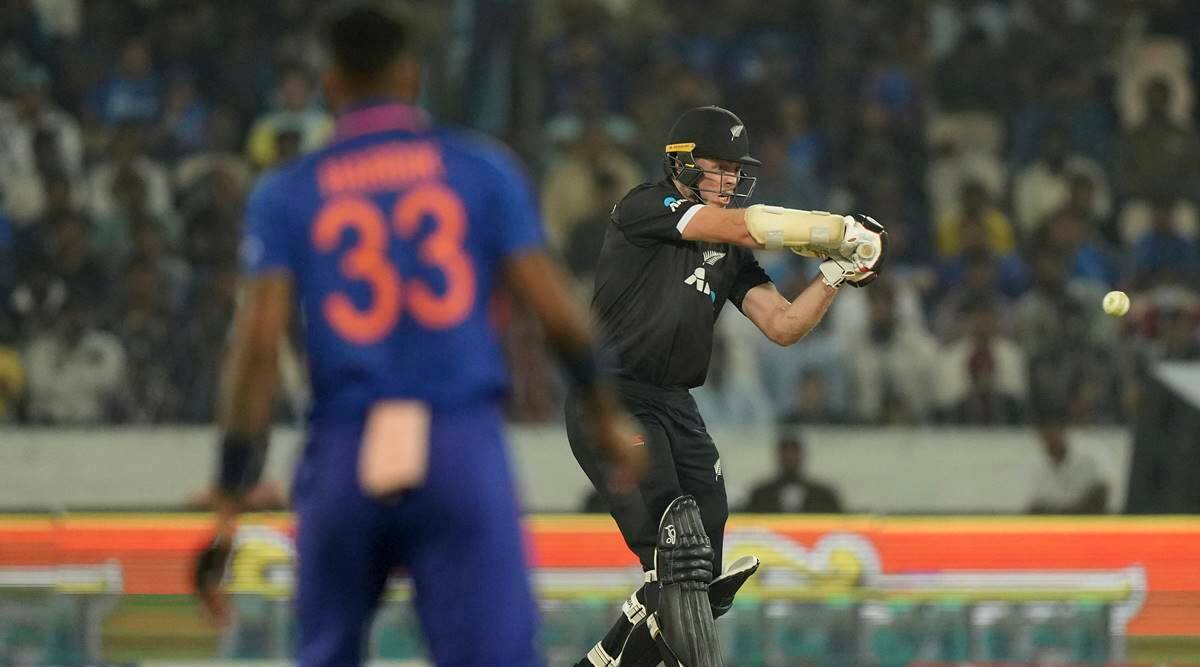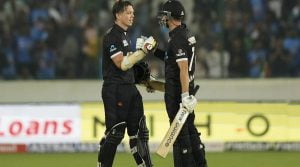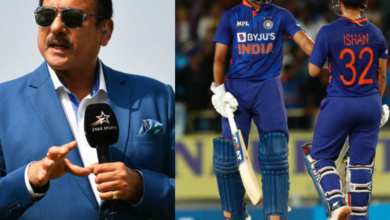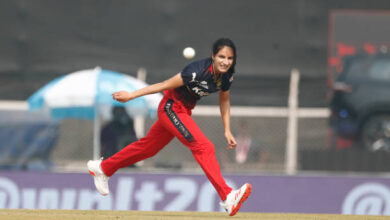
As soon as Mitch Santner entered the game with New Zealand reeling at 131 for 6, some spectators had already begun to evacuate the stadium. As the match appeared to be coming to an early conclusion, the sellers who had been selling popcorn and fries for Rs 100 began offering them for Rs 50. Michael Bracewell threatened to demolish India’s 350-run mark without the supporters’ knowledge, causing them to grab their popcorn and remain riveted to their seats.
New Zealand was five down for 110 in the 25th over when Bracewell went in, and by the time Santner joined him, the needed run rate had increased to 10.42. However, Bracewell not only found a way to extend the game but also came within two sixes of surpassing India’s total.
In the following couple of hours, Bracewell demonstrated the influence that T20s had had on ODIs. From teams perceiving T20s as a reduced version of ODIs, 50-over cricket is now played as an extension of 20-over cricket. Finn Allen, Glenn Phillips, Suryakumar Yadav, Liam Livingstone, and Harry Brook are examples of players who were previously just part of their T20 squads who are now playing ultra-aggressive ODI cricket. As a result, the 50-overs format is seeing a paradigm shift.
Unlike T20s, ODIs provide the batsmen with longer overs, which means that even in the case of early wickets, there is plenty time for the middle order to put up a score of 350 or more. Even if a side loses a number of wickets during the middle overs, teams do not panic in response to rising asking rates. As there are only four fielders outside the circle on the second powerplay, they opted to maintain composure instead, knowing they can always catch up. And two new balls at both ends means that spinners, who were formerly the captains’ fallback choice in the middle overs, are not as effective as they once were. Both are not reverse swings.
“It (T20s) has had a tremendous impact on one-day cricket, making it so fascinating,” Bracewell stated. “You may pull yourself back into a position of authority from such a situation. We weren’t quite in a position of power, but we were in a position from where we could have won the game, which is what you want to do when you’re somewhat down. But one-day cricket provides you ample time to regroup before attempting to go again. I believe that the abilities that players are acquiring in T20 cricket are incredibly valuable for the one-day game,” he continued.
At Hyderabad, Bracewell demonstrated all of these in real-time.

On a track where both teams’ top-order batsmen battled to adjust to its two-pace character, Bracewell had witnessed Shubman Gill’s earlier performance. The majority of his photographs had been taken in front of the square, especially in the V. Not that Bracewell strictly adhered to the strategy, as he scooped deliveries at will, but within a few deliveries, the left-handed batsman knew what to do.
Perhaps India played into Bracwell’s hands by not going for the kill, as Mohammed Siraj – by far the greatest bowler of the night for Rohit – only bowled two overs in his second spell and Washington Sundar, Hardik Pandya, and Shardul Thakur bore the brunt of Bracwell’s wrath between 32 and 40 overs. Only in the 36th over bowled by Kuldeep Yadav did New Zealand score less than six runs per over. Due to Bracewell, the Black Caps scored 116 runs without losing a wicket between the 31st and 40th overs (with 76 runs coming in the last six overs of that phase).

Suddenly, with a little dew in the air and having utilised the five-fielder rule to its fullest extent on the second powerplay, Bracewell had not only kept New Zealand in the game, but left India destitute of inspiration.
Bracewell is not unfamiliar with this scenario. In July 2012, while pursuing 301 to win against Ireland, the Kiwis were 120/5 in 21 overs when he went in and scored 127 off 82 deliveries to win the game for his team. In the final ten overs, knowing that India would not bowl spinners to him, he made a calculated attack, keeping the game alive until he was the last man out when New Zealand required 13 runs off the final five deliveries.
“When I stepped into the batter’s box, I was optimistic that we could win from that position. You attempt to work your way into a position where you can truly attempt the objective. When you need 20 off the last over, several things must go your way for you to cross the finish line. Probably around that time, I realised that this is as close as we’re going to get. “You don’t want to look too far ahead when you’re chasing 350 runs in 50 overs,” Bracewell stated. You’re attempting to complete the task one ball at a time.
Related Posts
| India vs New Zealand ODI series: "Siraj is really crucial, not only for the World Cup, but beyond," adds bowling coach Paras Mhambrey. |



